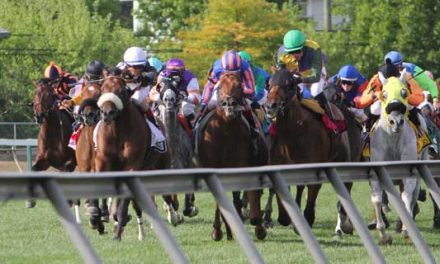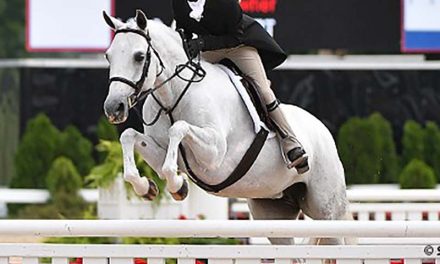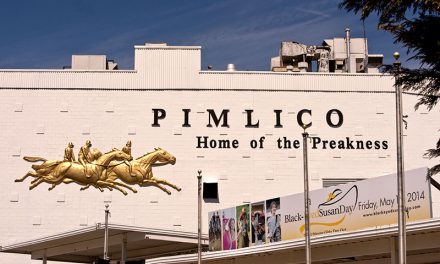In just one week, the first ever five-star event in Maryland will take place at the Fair Hill Natural Resources Management Area in Cecil County as international competitors jog their horses in the first horse inspection of the inaugural Maryland 5 Star at Fair Hill. We wanted to take this time to share a bit of history on this amazing multi-use facility!
Fair Hill: More Than a 5* (first published in the October 2021 Equiery)
By Katherine O. Rizzo
As the international eventing scene shifts to Elkton and the inaugural Maryland 5 Star at Fair Hill this month, eyes around the world will be on the competitors and those working hard behind the scenes to put on the newest five-star on the FEI eventing calendar. Whether you are watching the live-stream feed from the comfort of your couch or cheering in person from the competition grounds, one thing worth noticing is the property itself: the Fair Hill Natural Resources Management Area.
This 5,656-acre park in Cecil County is much more than an eventer’s playground. Managed by the Maryland Park Service of the Department of Natural Resources, Fair Hill is known for its open rolling hills, woodlands, and overall natural beauty. It is enjoyed by cyclists, hikers, and horseback riders year-round. The facility is home to the Cecil County Fair, the Fair Hill Races, Elk Creek Combined Driving Event, Foxcatcher Endurance Ride, and of course… Fair Hill International’s multiple United States Eventing Association horse trials and starter trials. Starting this year, it is also home to the Maryland 5 Star at Fair Hill.
How did such an enormous park become the Fair Hill that it is today? Read on for the story of one horseman and his quest to build a sanctuary for fox chasing.
A Man With a Vision
Born in Surrey, England, in 1896 to Americans Annie Zinn (née Rogers) and William du Pont Sr., William du Pont Jr. was by profession a banker and businessman; his love of horses, fox chasing, and Thoroughbred racing, however, truly make up his legacy. The du Pont family moved back to the U.S. in 1902 and took up residence at the family’s Virginia estate, Montpelier, once the home of the 4th U.S. President, James Madison. There, along with his sister Marion (who also became a Thoroughbred breeder and for whom the Equine Medical Center in Leesburg, VA is named), du Pont rode horses and raised champion foxhounds.
In 1919, du Pont married Jean Liseter Austin and the couple moved to Newtown Square, PA. They established Liseter Hall Farm where they bred and trained Thoroughbred racehorses under the name Springlawn Farm. The farm boasted the first indoor galloping track in the U.S. as well as an indoor arena, half-mile training track, breeding shed, hunter barn, show horse barn, and other outbuildings needed to run the large racing operation.
The du Ponts built a similar facility in Delaware, at Bellevue Hall, which William had inherited from his father. During this time, du Pont also began systematically purchasing land in Cecil County and around Liseter Hall in Pennsylvania. After du Pont and his first wife divorced in 1941, he moved to Bellevue Hall, which was close to his offices at the Delaware Trust Corporation.
Du Pont never lost his love of horses and hounds, and he began building a fox chaser’s paradise at Fair Hill, the Cecil County lands he had purchased during the 1920s and 1930s. On the racing side of his businesses, du Pont built 23 racetracks in the US, including what are now Delaware Park and the steeplechase course at Fair Hill.
Building Fair Hill
Starting in the 1920s, du Pont purchased nearly 8,000 acres along the Maryland-Pennsylvania line. During the Great Depression, he increased his holdings by purchasing land from struggling local farmers and then offering them jobs and housing to allow them to continue to farm the lands. He also hired local residents to build fences, jumps, out buildings, and residences within the property.
Du Pont named the Maryland portion of his property Foxcatcher Farm and built another Thoroughbred racing stable there. One of the notable horses that came out of the Foxcatcher operation was 1938 Preakness Stakes winner Dauber.
Located within this section of the property, du Pont also built a turf course modeled after the renowned Aintree in England. He molded the land, planted and seeded it with high quality turf grass, and then let the turf develop for seven years before running horses over it. He even set aside around 400 acres of his Fair Hill property to grow sod grass to maintain the turf track.
The Foxcatcher National Cup debuted in 1934 and included 19 obstacles, the lowest of which was 4’8’’ and the highest of which was 6’4’’. Eventually, du Pont would hold two race meets each September. Now run as the Fair Hill Races each May, it is the only steeplechase meet in Maryland where parimutuel betting is offered. Du Pont’s famed course recently received a facelift as part of the renovations of the new Fair Hill Special Event Zone. The race meet was suspended for 2020 and 2021 to let the new turf set properly.
In addition to the racing stables and steeplechase course, du Pont built a kennel and accommodations for his huntsman and staff so that he could move his pack of American Foxhounds up from Virginia to Fair Hill. This pack became the Foxcatcher Hounds. For most of the rest of his adult life, du Pont hunted three mornings a week from Fair Hill before heading to work at the bank. The kennels and barns are currently used by Fair Hill Stables.
To protect his hounds and territory, du Pont fenced in the perimeter of the 8,000 acres with a high chain link deer fence and took over the maintenance of public roads through the property in order to build many of the bridges and tunnels still used by horseback riders today.
A businessman to the core, du Pont also created a self-sufficient cattle operation at Fair Hill during World War II. He had the grassland for grazing cattle and making hay as well as the cropland to grow the grain needed to feed the cattle. He even built a grain mill, and silos and barns to store everything.
He also created a gravity-fed watering system for the cattle and for an emergency fire system. Many of the bullpens and barns he had built are still standing and are rented out by DNR as turnout paddocks for horses.
Du Pont continued to purchase land through the 1950s. Eventually his aging body traded a horse for a Jeep so he could still follow his hounds. He died on December 31, 1965 at the age of 69.
Maryland Takes Over Fair Hill
In 1975, the estate of William du Pont Jr. sold the Maryland side of the property to the State of Maryland for $6 million. The property was purchased using Open Space funds. George Strawbridge, a fox chaser, avid steeplechaser, and heir to the Campbell Soup Company, purchased the Pennsylvania portion of the property.
During sale negotiations, there was an informal agreement that fox chasing, the Fair Hill Races, the Cecil County Fair, and other small activities could continue on the property. There was not, however, a formal covenant requiring that equine activities remain part of Fair Hill’s future. Luckily, the State saw the value of these activities and all are still going strong today.
In 2000, the management of the facility was moved to the Maryland Department of Natural Resources which worked alongside local officials to make Fair Hill a multi-use facility. Collaborating with hiking groups, cycling groups, and equestrian groups, DNR has repaired roads, bridges, buildings and overgrown trails within the park.
Equestrian use of the property was expanded in 1983 when the Fair Hill Training Center was built on 350 acres of the park. The training center was the vision of Thoroughbred trainer Dr. John Fisher who, along with investors and fellow trainers George Strawbridge and Gene Weymouth, signed a 98-year lease with DNR to build and run the facility.
The training center includes an all weather dirt track, Tapeta surface track, turf course, and 18 barns with 490 stalls. In addition, the training center also has on-site veterinarians and the Fair Hill Equine Therapy Center, which offers state-of-the-art rehabilitation and treatment options such as an AquaPacer and a Hyperbaric Oxygen Therapy chamber. Two Kentucky Derby winners (Barbaro in 2006 and Animal Kingdom in 2011) and one Belmont Stakes winner (Union Rags in 2012) have come out of the training center.
Endless Possibilities
The new Fair Hill Special Event Zone has created endless possibilities for additional activities at Fair Hill. The area, located in what was the steeplechase section of the park, now includes three all-weather competition arenas, a wider turf track and new cross-country jump complexes.
It is this section of the park that will serve as the main location for the Maryland 5 Star at Fair Hill. In order to maintain the rural and natural aspects of the park, all stabling, vendor tents and spectator seating will be brought in for the event and taken back out when the event has concluded.
The new world-class facility not only brings Fair Hill into the 21st century but also increases the value of Fair Hill and helps boost the economy of Cecil County and Maryland as a whole while preserving the history of this legendary property.
Special thanks to Louisa Emerick (Fair Hill historian), Sally Goswell (Fair Hill Training Center manager), Maryland DNR and the Fair Hill Foundation for contributions to this article.
For more on this topic, click on the links below:
Fair Hill: From Foxhunter Paradise to International Equestrian Center
The Fair Hill Training Center – A History
About Us: Fair Hill International












